It is that time of year again; time to take a tour through my gardens! Even in other years, the only people that visit my gardens are my family, so the pandemic did not change much. I love sharing plants and ideas with people, so this yearly virtual tour is exciting to do.
I will dive right into the garden and I have some exciting new additions and new plants to show off.

New Additions to the Garden
One of the first things I added to the garden was a fire pit. After having an ugly red maple tree cut down, I decided to put in a fire pit near where the tree was. Using native pink granite boulders, I built a 5 foot diameter ring and surrounded it with logs for seats. I wanted a larger than normal fire ring to be able to burn larger logs.
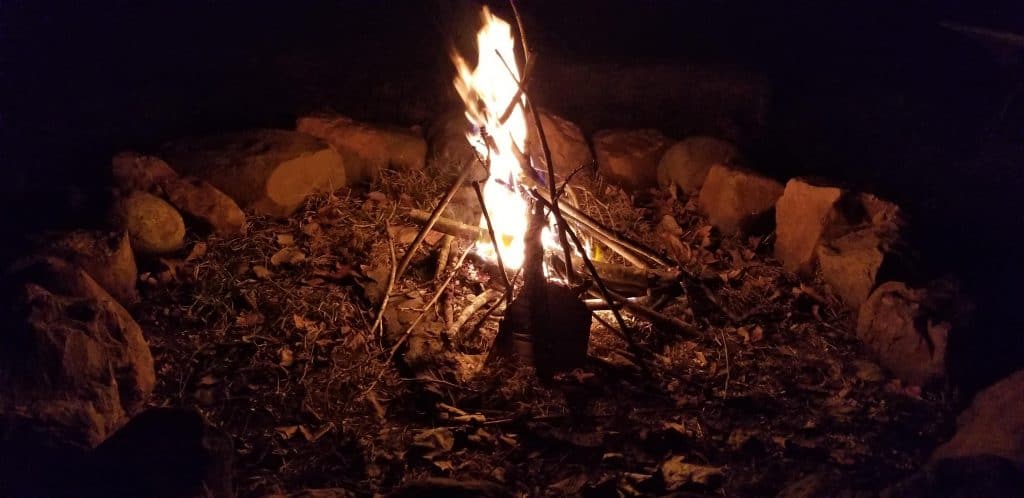
Another new addition was added into the Monarch Waystation. A 20 foot flag pole is the perfect addition to any garden. Now I can display my patriotism with the American and Kansas flags, respectively. Even though it cannot be seen during the summer because of tree canopies; you can see it from the highway through the winter.


Entry Garden
The entry garden is near the front of the house and is in part shade most of the day. It is a constantly evolving garden, as I mix and match perennials and annuals. Last winter, my newly planted birch tree was broken down by an ice storm, so it had to come out. This fall, I planted a plum tree to replace it.
Adding dark brown mulch to the walkways really sharpens the contrast between the path and beds. I love dark colored mulches, but would never use anything with dyes on planting beds. Plants should be their own mulch, shading the ground to prevent weeds.
This winter I will be moving some larger shrubs out of the entry area (ninebark, lilac) to the shrub border. These shrubs have served their purpose in creating backdrop for the garden, but take too much space near the new fire pit. I do not like shearing shrubs, so I want to put them where they can do their thing.
The Driveway Border
A new thing started last winter was the Driveway Border. We share our driveway with our neighbor who lives up the hill from us.
One of the things I really like is the use of a white picket fence. Using recycled pickets, I was able to build fencing along most of the lower parts of the Monarch Waystation and the Shrub Border, which run along the north side of the driveway.
Another section of picketing has been used to hide a brush pile and protect against falling into the creek off the west side of the drive.
On the fencing itself, I have displayed various antique garden and farm tools, collected over the years. In front of the fence I plant dianthus, ornamental onions, mums, clematis, and annuals.
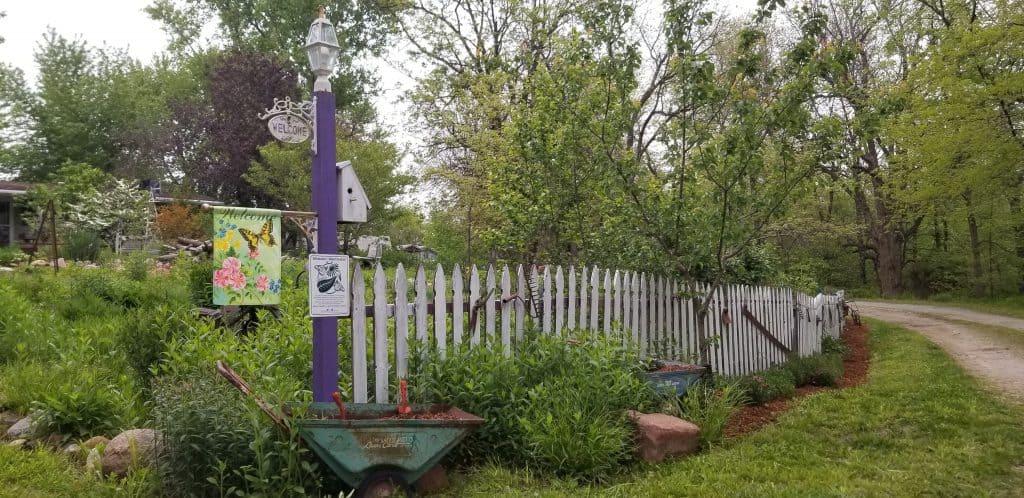
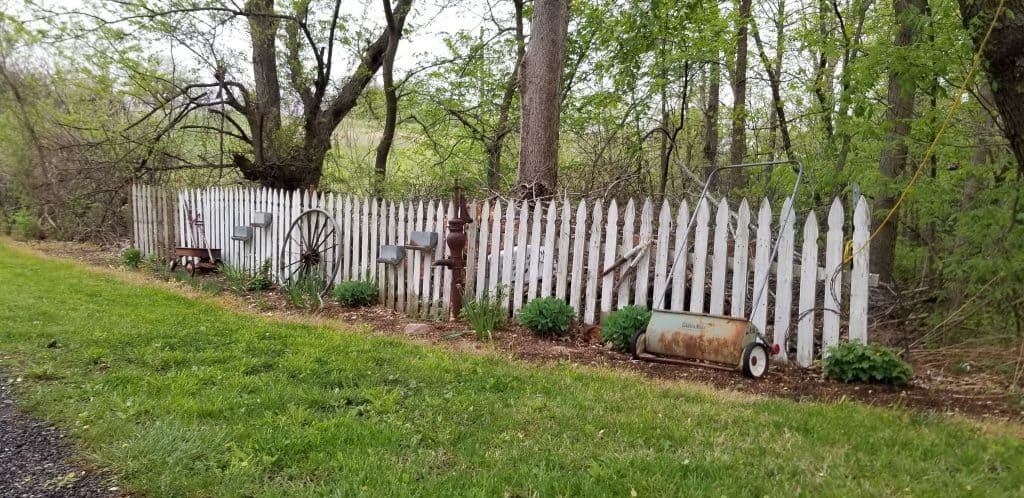
Woodland Border Garden
The Woodland Border garden started looking good through spring, then was completely taken over by jewelweed, a native woodland annual. I will have quite the chore next year eradicating much of this annual. On a brighter note, I saw my first blooms of the obedient plant and shooting stars. And my white blooming Phlox divaricata was awesome!

The Walnut Island Bed
Over the years I have continued to trial plants under the shade of a black walnut and a shagbark hickory. Last winter I had to dig up the ground on the west side of the bed to locate the septic tank and the whole area has not been put back together yet. But the plants in the beds still looked great this spring and into early summer.
Bear’s breeches, hostas, and peachleaf bellflowers bloomed nicely along with bloodroot, Virginia waterleaf, and creeping bellflower.

The Sunny Cottage Garden
In my backyard, just behind our fenced in area where the dog runs, is the Sunny Cottage Garden. I originally planned this area to be a cutting garden, but it has become so much more. On the west side, we had to fence in the yard for our large watchdog, so garden areas are more clearly defined than before.
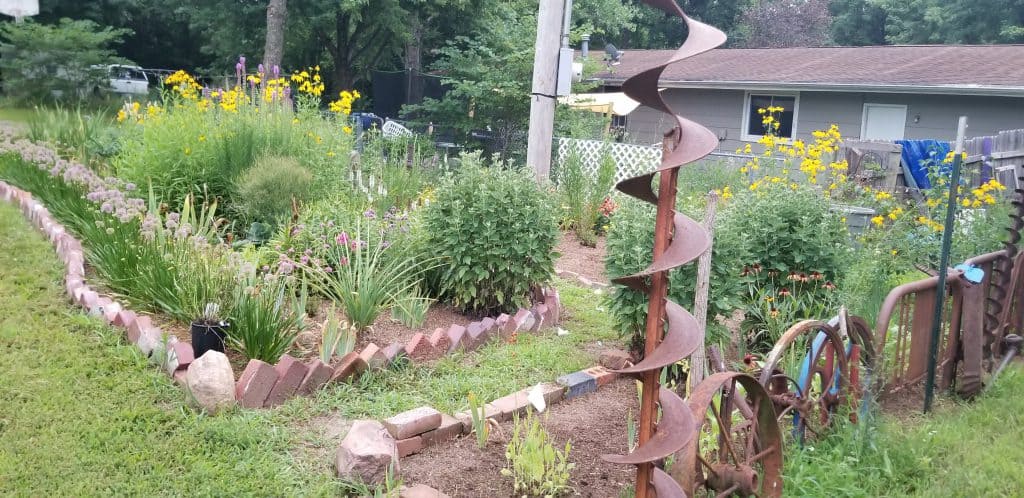
Looking east (above), this view of the garden really highlights its best features. The fence here is made of rusty objects found at the farmsteads of my grandparents and my in-laws. The large, yellow-blooming plants are Ratibida columnifera, grey-head coneflower. Also blooming is ornamental onion ‘Millenium’, culver’s root, liatris pyncostachya, and various coneflowers.
The Native Island Garden
From the east side of the backyard looking westward (below), you can see the Native Island Garden on the right and the Sunny Cottage Garden on the left. I choose this spot for natives because the soil is poor and I wanted something to help hide the water meter.

Though from here you cannot see what is in the garden, there are a variety of larger natives and some that do well in landscapes. These include giant rudbeckia (Rudbeckia maxima), cup plant (Silphium perfoliatum), prairie dock (Silphium terabinthinaceum), willowleaf sunflower ‘First Light’, Liatris aspera, and much more.
The Potager Garden
So this spring instead of working more on the potager garden, my wife decided she wanted garden tubs out front to plant in. So we got some used mineral tubs from a friend, and planted them up. I also planted some in the Potager Garden with tomatoes and cucumbers.

This (above) is the start of my wife’s garden. She grew squash, cucumbers, herbs, peas, beans, beets, and eggplant in her tubs. Later on I added trellising for her cucumbers and peas.
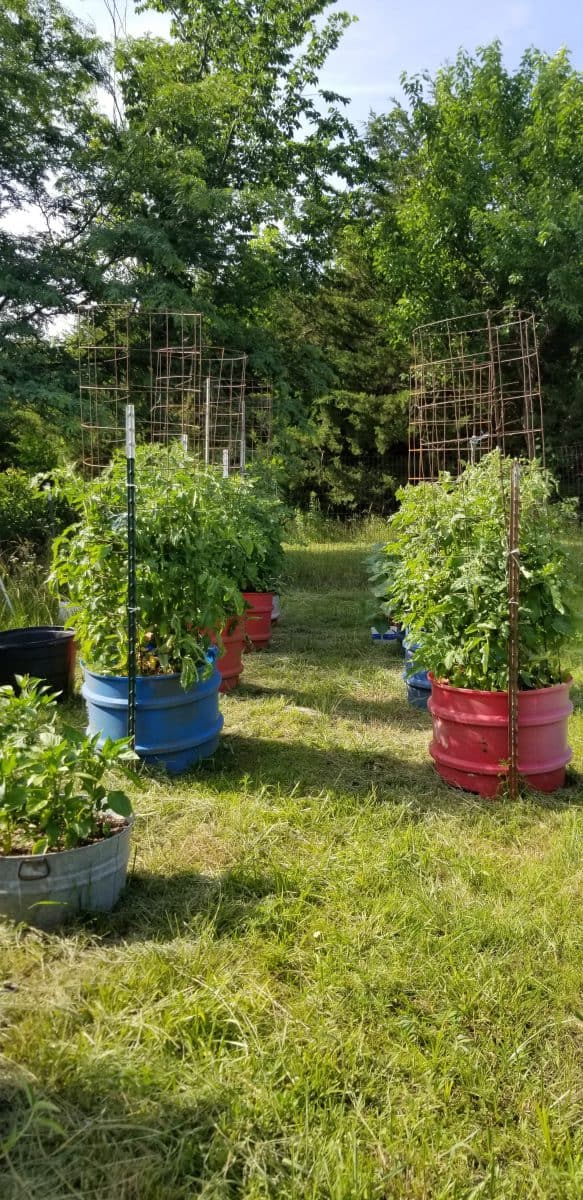
I planted the above tubs with tomatoes, peppers, and cucumbers. They are semi-self-watering, meaning that I only had to water them 2 times per week. They did really well until late summer hit and the stress of drought brought them down. However, I had planted 3-4 planted per container, and I think 1 plant per container would be better for next year.
Conclusion
2020 was a new year and a tear of new for my family and I. We added chickens, ducks, geese, goats, rabbits, and new dog to the farm. We grew vegetables in containers. And we enjoyed every minute of it! Next week I will show you some of the best flower and insect photos from the garden and farm.
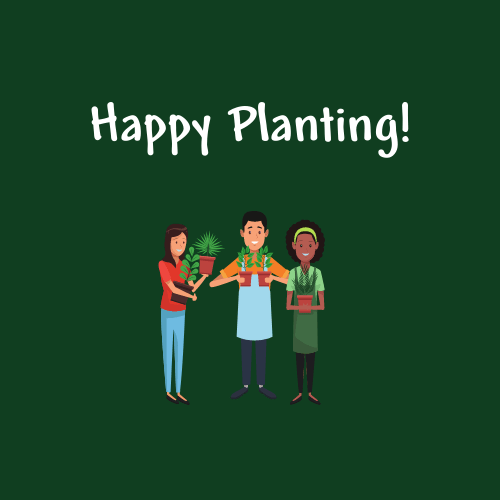




Wow, you are an inspiration. Thanks so much for sharing!